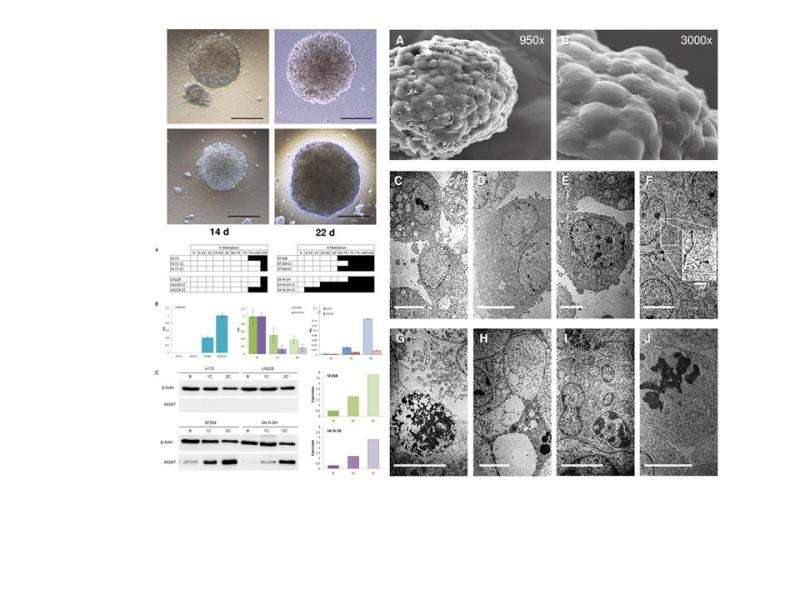Researchers make progress in glioblastoma multiforme research

A research team, with the participation of the University of Granada (UGR), has made some progress in determining why glioblastoma multiforme (GBM), one of the most aggressive brain tumors known, is resistant to existing drugs, which is one of the main limitations of its treatment. The results have been recently published in two articles in PLoS One.
The researchers have proven that proteoglycans (the cells' structural elements), called decorin (DCN) and lumican (LUM), could be decisive in the behavior and development of resistance to the drugs used for treating glioblastoma multiforme, such as temozolamide (TMZ). On the other hand, they have revealed that the inhibition of the transcription of some of the sub-units belonging to the mismatch-repair (MMR) complex, a system that analyzes and repairs DNA, could be responsible of the failure of current therapies against this kind of tumor.
This is a scientific breakthrough that could be useful for the search of new resistance markers in GBM as well as for the development of new therapeutic strategies which avoid the resistance to drugs that these tumors possess.
Low survival rate
GBMs, the most frequent and most aggressive tumors that affect the central nervous system, still present a low survival rate (less than a year and a half after diagnosis), despite the use of TMZ combined with other drugs or with radiotherapy. This is due to the development of resistance to the treatment, among other causes.
This work analyzes how the massive, synergistic expression of DCN and LUM in neurospheres of stem-like cells derived from GBM is correlated with a lower tumor cell proliferation rate and with a lower development of apoptosis (a type of cellular death used by pluricellular organisms to eliminate damaged or unnecessary cells), and also correlates with the rise in resistance against TMZ treatments, which is one of the main drugs currently used in the treatment of these patients.
In the other hand, studies carried out in glioblastoma and neuroblastoma cell lines exposed to some drugs have proven that TMZ resistance is caused not only by the classic mechanism of the DNA-repairing enzyme MGMT, but it's also related to the silencing of the MMR complex after the exposure to the drug.
Research is now focused on proving the relevance of these two molecules in the in vivo behavior of glioblastomas and analyzing the resistance mechanism based in the MMR complex.
More information: Gloria Perazzoli et al. Temozolomide Resistance in Glioblastoma Cell Lines: Implication of MGMT, MMR, P-Glycoprotein and CD133 Expression, PLOS ONE (2015). DOI: 10.1371/journal.pone.0140131
Cristiano Farace et al. Microenvironmental Modulation of Decorin and Lumican in Temozolomide-Resistant Glioblastoma and Neuroblastoma Cancer Stem-Like Cells, PLOS ONE (2015). DOI: 10.1371/journal.pone.0134111
















